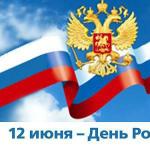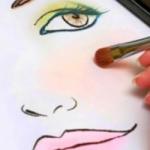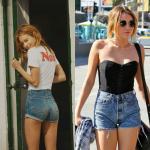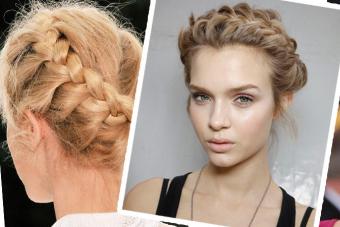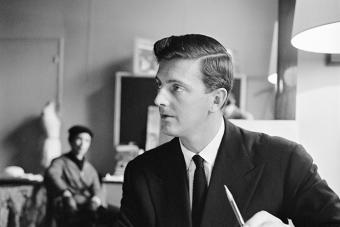Patriotic feelings are embedded in the very process of a person’s life, which takes place within a specific sociocultural environment. Patriotic education is a whole system of purposeful action. Much attention is now paid to museum pedagogy, targeted work with children to develop their first feelings of citizenship and patriotism.
Based on psychological and pedagogical research on the importance of preschool childhood in the development of a child’s personality, great importance is assigned to the harmonization of the child’s activities, where the cultural aspect is given the leading role. During the period of renewal of preschool education, the role of folk culture as a source of creative development of the potential of children and adults increases significantly.
The use of the regional component in preschool educational institutions in the implementation of the educational program from the perspective of the Federal State Educational Standard for preschool education assumes the following:
Introduction of regional content, taking into account the principle of a gradual transition from cultural and historical facts closer to the child to less close ones.
An activity-based approach to introducing children to the history, culture, and nature of their native land (children themselves choose the activities in which they would like to participate in order to reflect feelings and ideas about what they saw and heard (creative play, writing stories, writing riddles, making crafts.
Conscious choice of familiarization methods (mini-museum, exhibitions, albums).
Compliance with the principles:
The principle of continuity: the museum, being part of the educational space of the kindergarten, is connected with the system of classes and independent children's activities, reflecting the themes of classes, excursions and walks.
The principle of partnership: the museum is the result of cooperation between adults and children, thanks to which the rights of the child are realized.
Pedagogical functions of the museum:
Educational:
assimilation of information; stimulating interest in folk life
use of didactic materials that expand the scope of the curriculum, enrichment of vocabulary
Developmental:
activation of thinking;
development of intellectual feelings, memory, sensory and physiological structures;
development of visual and auditory perception,
Educational:
formation of personal qualities, views, beliefs; formation of patriotic feelings, interest in folk culture
Educational:
formation of skills and abilities;
formation of an adequate, meaningful attitude towards the information received.
Directions of innovative work:
Involving cultural and educational institutions in cooperation: a local history museum, an art gallery, a children's art school, an extracurricular activity center, etc.
Strengthening ties with sociocultural objects.
Development of themes and content of exhibitions and excursions for various age groups.
The purpose and objectives of the museum’s development:
The purpose of creating our museum was:
Introducing children to the cultural traditions of the Russian people, way of life, customs, folklore, and the holiday calendar. Awareness of the meaning and significance of the historical and spiritual value of museum objects.
Tasks:
Reveal through objects, exhibits, expositions in an accessible form the unique history of your small Motherland.
Introduce Russian folklore.
Develop children's personal qualities through museum pedagogy.
Foster love and affection for your family, home, cultivate a caring attitude towards the cultural heritage of your country, develop a sense of pride in your people.
Forms of work in the museum:
Theatricalization (children try on various historical, cultural and psychological roles and play them out).
Child-tour guide (the child-storyteller absorbs information at a qualitatively better level, and the child-listeners perceive the words of their friend with great attention and dedication).
Direct educational activities (the teacher explains the connection between a craft and people’s lives, creating exhibits for the museum during the lesson).
The main idea of the museum's development.
Initially, we focused on introducing children to Russian national culture, with the goal of socio-psychological adaptation of children to the realities of modern life through education based on Russian history and culture, traditions, stable moral guidelines, as well as the development of social and communication skills.
The museum is the result of the joint work of the teacher, children, and parents. This is a large search activity, the content of which is meetings with keepers of antiques, work with family archives, family heirlooms. Preschoolers feel involved in the museum: they participate in the discussion of its topics, bring exhibits. The Russian hut contains objects most often mentioned in Russian fairy tales and nursery rhymes.
The museum recreates the main details and furnishings of a Russian hut. A special feature of the exhibition is its dynamism and multifunctional use. It can be fully or partially transferred to a hall, group to create the interior of a folklore festival, class, it is not static, it can change and rearrange depending on the content of the excursions
Red corner;
Babi kut.
Thematic structure of the exhibition(sections and topics of the exhibition)
For ease of viewing and perception, the entire museum exposition is arranged in thematic blocks:
“Furniture”: table, benches, chest, cradle.
“How Maryushka fed her family”: wooden bowls, jars, cups, spoons.
“The housewife's assistants”: poker, broom, chop, trough, tub, washstand, bucket.
“How Maryushka washed and ironed clothes”: ruble, trough, board, steam, hot iron, rocker.
“Kitchen utensils”: kneading bowl, cast iron pots, pots, samovars, grip, frying pan, sieve, sieve, scoop, rolling pin, whorl.
“Clothes and shoes”: Russian folk costumes, bast shoes and pistons.
“Home lighting”: torch, candle, lamp.
“Masters and craftswomen”: spinning wheel, spindle, wicker, knitted, woven products) towels, valances, tablecloths.
“Woven products from birch bark and bast”: box, basket, baskets
“How Maryushka and Ivanushka raised children”: a cradle, a shaky doll, folk toys.
In the future, we plan to replenish the exhibition with objects of peasant labor: plowshares, wheels, horseshoes, arcs, scythes, rakes, pitchforks, sickles, staples, and collect various types of locks.
For the future We plan to replenish the exhibition with objects of peasant labor: plowshares, wheels, horseshoes, bows, scythes, rakes, pitchforks, sickles, staples, and collect various types of locks.
Make wider use of information and communication technologies in the museum’s work.
Thematic plan for conducting game excursions in the museum in the second junior group
Developed by the deputy head of educational and methodological work, Lyubov Viktorovna Smirnova.
|
September. |
“You are welcome to the hut” |
Forming ideas about the hut, getting to know the owner. |
Folk game “Katya, Little Katya” |
|
"Soroka-magpie" |
Form an idea of kitchen utensils: clay pot, bowl |
Playing out the nursery rhyme “Magpie” |
|
|
Ay, swing, swing. |
Getting to know the cradle, the unsteady one. |
Reading “So People Are Sleeping”, game “Bounce, Bounce” |
|
|
Some water, some water. |
Introducing the washbasin. |
Singing the song “Water-voditsa” |
|
|
Water is on a duck's back, Vanya's skin is thin. |
Consolidating ideas about a shaky basin and a washstand. |
Performing nursery rhymes about washing, lullabies. |
|
|
The hut is made of brick, sometimes cold, sometimes hot |
Show the purpose of the stove, cast iron, and grip. scoop. |
Folk game "Lada" |
|
|
Our hostess knew how. |
To consolidate the idea of using a broom, golik, |
Learning the nursery rhyme “Our Mistress” |
|
|
Kolobok is a ruddy side. |
Introduce such museum exhibits as a sieve and rolling pin. |
Dramatizing a fairy tale |
|
|
A horned goat is coming. |
Introduce the purpose of the jug and milk pan. |
Use nursery rhymes about cows and goats |
Thematic plan for conducting game excursions in the museum in the middle group
|
Use of museum attributes. |
Integration with other activities. |
||
|
September. |
“Dear guests are welcome” |
Continue to introduce the hut, show the purpose of the red corner. |
Let's try the treat - oatmeal jelly. Memorizing "Window-Autumn" |
|
“How Ivanushka was at the fair” |
Continue to introduce the attributes of festive folk costume (ribbons, beads) |
Playing out the nursery rhyme “Ay, tari, tari, tari” |
|
|
“Mola went for water” |
Consider the buckets and rocker. |
Dramatization of the song. Rocker decoration |
|
|
"From Grandma's Chest" |
Continue your acquaintance with folk toys (spillins, nesting dolls, whistle toys) |
Making a twisted doll |
|
|
"Come to the Upper Room" |
Rolling pin, oven, brow, flood |
Telling the fairy tale “The Fox with a Rolling Pin” |
|
|
Our friends - spoons, bowls, mugs |
Introduce ancient wooden utensils. Wooden spoons as a household item and musical instrument. |
Productive activity “Decorate the dishes” |
|
|
"Oh, my bast shoes" |
Show the bast shoes and introduce them to their purpose. |
Fairy tale "Bubble, straw and bast shoe" |
|
|
"The Landlord's Helpers" |
Clarify your understanding of such museum exhibits as a sieve, rolling pin, samovar |
Excerpt from the fairy tale “Fedorino’s grief” |
|
|
“The chicken in the hut is sweeping with a broom |
Broom, golik, dustpan. |
Folk riddles |
Thematic plan for conducting game excursions in the museum in the senior group
|
Use of museum attributes. |
Integration with other activities. |
||
|
September. |
“How Maryushka washed and ironed her clothes” |
Show irons (heat and charcoal), ruble, roller. Introduction to household items used in washing (trough, board), |
Folk riddles about the iron. Washing handkerchiefs. |
|
"Magic knitting needles" |
Introduce knitting needles and knitting with them. Examination of woolen items, conversation “Where does wool come from” |
Productive activity “Let’s decorate Maryushka’s knitted things” |
|
|
Golden spindle |
Introduce ancient tools and materials of traditional women's labor (Tow, spinning wheel, spindle) |
Folk game "Spinning" |
|
|
Magic needle |
The role of embroidery and patchwork products in creating home comfort. (valances, curtains, patchwork blankets, rugs) |
Drawing patterns for embroidery with signs of Mother Earth |
|
|
How Maryushka raised her children. |
Introduce the traditions of family upbringing and folk toys. |
Makovsky’s painting “Peasant Children” Nursery rhyme “Lada-lada” |
|
|
Steam on top, heat below - this is a Russian samovar |
Introduce the tradition of tea drinking. |
Over the samovar we get acquainted with boring fairy tales. |
|
|
Spring has come and brought the magpies. |
Sieve, rolling pin, chest |
We bake larks. |
|
|
Clothes of our ancestors |
Acquaintance with women's folk clothing (sarafan, kokoshnik), the features of its manufacture. |
Singing "Be born, little white lenok" |
|
|
Farewell to the hut |
To consolidate the idea of a museum as a place of immersion in the past, a place for storing ancient rare objects. |
Folk riddles |
Relevance of the topic. The problem of patriotic education of children is one of the most pressing. Educational institutions can play a big role in solving it, within the framework whose activities ensure the spiritual and moral development of the younger generation.
It is in kindergarten that our children receive the first information about various phenomena of life and absorb respect for their people, for their Motherland. They learn a lot of new and interesting things about their past and present, and get acquainted with the masters who create beauty. They learn to see not only beauty, but also to understand its value. In kindergarten, children learn a lot of interesting things about craftsmen, artists, sculptors who create original works of art.
Therefore, it is extremely important during this period to create an inspired environment around the child, to develop an aesthetic attitude towards it, to prepare him - not so much informationally as emotionally - for the perception of a work of art.
The concept of “museum pedagogy,” which appeared in the early 1980s, was borrowed from German terminology. Modern museum pedagogy is developing in line with the problems of museum communication and is aimed at solving the problems of moral and patriotic education and activating the creative abilities of the individual. The active use of museum technology in the educational process helps to introduce children to the origins of folk and national culture, contributes to the preservation of folk traditions, and instilling a sense of patriotism and spirituality.
Getting to know the museum allows preschoolers to develop their abilities for aesthetic contemplation and empathy, develop respect for other cultures, and the need and ability to independently master the world around them.
The search and development of innovative approaches to solving the problems of patriotic education of preschool children are of great importance. So, one of them in our kindergarten was the creation of mini-museums.
Relevance “Hundreds of unexpected talents and abilities can blossom in any person if he is simply given the opportunity.”
D. Lessing. In a rapidly changing life, a person is required not only to possess knowledge, but also, first of all, to be able to obtain this knowledge himself, to think independently and creatively. Patriotic education is an important condition for the comprehensive development of the individual. It is in preschool age that the initial process of the emergence of the rudiments of patriotism occurs. One of the methods of working on the patriotic education of preschool children is the creation in preschool educational institutionsmini-museum . Mini - a museum in a preschool educational institution allows for the implementation of an educational program, is an effective module of a developing subject environment, and a means of individualizing the educational process. They also broaden their horizons and open up opportunities for creative and independent research activities. Currently, there is increasing interest in the traditions, history, and culture of one’ssmall homeland . Therefore, in our group we decided to createmini-museum , which was called"Russian national costume" .
Target. Formation of patriotic feelings towardstraditions of his peoplethrough the creation and use of mini-museum materials .
Tasks. 1. Educational
To develop a sense of patriotism, love for the traditions of one’s people, interest in their past, clothing in different historical times.
- Introduce clothing items at different historical times.
Expand children's understanding ofuse acquired knowledge and skills in various types of activities (motor, visual, gaming, speech, as well as in design, experimentation, manual labor, etc.)
Teach children the techniques of a museum guide.
2. Developmental :
Developeducational children's activity through museum activities involvingparents
To develop dialogical, coherent speech and communication skills of children, the ability to participate in conversation, answer and ask questions, recite poems by heart, etc.
Develop creative imagination throughfamiliarization with Russian national costume.
3. Educational :
Instill in children a sense of pride in their people.
Cultivate a caring attitude towards attractions.
Atuse museum pedagogy as an innovative technology in the system of forming a sense of patriotism in preschoolers, the following pedagogical means were taken into account,
Pedagogical means,used in the mini-museum
Form of conduct : classes, excursions, targeted walks, entertainment, reading works of fiction, didactic games, productive activities for children, independent play activities.
Form of organization : collective, group, individual.
Methods :
Verbal - conversations, reading fiction, listening. - visual – excursions, looking at books, illustrations, photographs, observations;
Practical – didactic games, album design, making crafts.
Techniques : research activities, gaming techniques.
Peculiaritymini museum
Important Featuremini -museums - participation in their creation of children andparents . Preschoolers feel involved inmini-museum . Theycan : participate in the discussion of its topic, bring exhibits from home, children from older groups conduct excursions for younger ones, add their own drawings to them.
In real museums you can’t touch anything, but in oursmini -the museum is not only possible, but also necessary! You can visit it every day, change it yourself, rearrange the exhibits, pick them up and look at them. In an ordinary museum, a child is only a passive contemplator, but here he is a co-author, the creator of the exhibition. And not only himself, but also his dad, mom, grandparents.Mini -the museum is the result of communication, joint work of the teacher, children and their families.
Decormini-museum :
Museum exhibits are collected according to the age of children. Collectionsmini -museums are located on the wall and on the shelves of the closet in the group room, so they are always available for viewing, children’s games, and other child activities
Usage museum in the integration of educationalregions :
1. Social and communicative development.
Initially, preliminary preparation of children for communication with museum culture was carried out. Together with the children, we have developed certain rules of conduct inmini museum .
RULES OF CONDUCT IN OURMINI MUSEUM
1. No noise is allowed in our museum“Listen yourself and let others listen” ;
2. Many exhibits are allowed to be touched by hand
3. The examined exhibits must be put back in place.
"Save history for others" ;
4. Exhibits must not be broken.
5. You can and even need to ask questions.
6. In our museum you can play, draw, create and create.
7. You can visit the museum every day, add new exhibits, change it yourself, and rearrange the exhibits.
8. Be kind to others
“Let your neighbor be comfortable around you too” ;
Introduced children with a number of concepts and terms that are difficult for them. For example,"time" , "culture" , "story" , "exhibit" , "researcher" .
"Exhibit" - an object exhibited at an exhibition or in a museum.
"Story" – study of the past
In processmini - museums, we paid special attention to the development of independent activity of preschoolers. Since the leading activity for a child is play, in ourmini -the museum has a corner"game library" . Children canuse games independently in the process of independent activity or together with a teacher in the process of direct educational activity.
board game“Dress up the doll in a national costume” , children dress dolls and name elements of national clothing.
Target : consolidate knowledge about the national costumes of the peoples living in Russia.
Dialogue with the museum also enriches the independent activities of children, allowing them to satisfy their need for self-affirmation and recognition from their immediate environment. Children are happy to act as a guide in front of younger children and peers, giving a tour ofmini-museum (showing and talking about the museum exhibits) .
Our children are becoming"tour guides" , enthusiastically talking about what they themselves know.
role-playing game"little guide school" children are given the concept
that excursions can be conducted everywhere, including around the kindergarten.
Target : promote the assimilation of experience in social relationships, the ability to express personal attitudes to events and facts, teach children to evaluate their own activities and the activities of others, teach them to take into account the interests of others, develop speech and creative abilities.
2. Cognitive development
The first exhibit of our museum was a sundress and a kokoshnik (sewn by my parents),
Conversation"Women's folk costume"
Target. Continue to introduce children to women's national costume. Instill patriotic feelings in children.
Thanks to the collected exhibits, children can look into the historical past of the national costume.
Looking at the album“Clothing of the peoples living on the territory of Russia” . Children have the opportunity to examine the clothing of the peoples living in Russia.
One cannot help but recall the wonderful words of D. S. Likhachev
“Love for the native land, native culture, native speech begins withsmall - with love for your family, for your home. Gradually expanding, this love turns into love forHomeland , its history, past and present, to all humanity."
3. Speech development
Everymini -a museum is a means of communication.
In ourmini -the museum has many ways to introduce a child to culture, and means for developing children’s speech, mastering it as a means of communication, enriching their active vocabulary, developing coherent, dialogical and monologue speech, and developing speech creativity.
4. Artistic and aesthetic development.
Taking into account the specifics of organizing work with children, the creative works of children appear as exhibits in our expositions. Independent work in the corner of fine arts
coloring pages"National Costume" ,
5. Physical development.
Learning with children the folk games that our grandparents played.
Target : attract children to participate in folk games,
development of motor activity of children and contribute to the preservation and strengthening of the health of preschoolers.
Work withparents
Replenishment of the expositionmini -museum with new exhibits
Recommendationsparents "How introduce child with Russian costume" .
Involve in the production of new folk costumes.
Attractionparents into the educational process through joint activities with children.
Conclusion :
The knowledge gained has a positive impact on the patriotic education of children. Children deepened their knowledge about the history of Russian folk costume and its attractions. They learn to show respect for the traditions of their people.
The result of the work was also positive changes in attitudeparents to the problem of patriotic education.
Artemenko Alexandra Alexandrovna
Job title: a kindergarten teacher
Educational institution: MBDOU kindergarten No. 12
Locality: city of Yartsevo, Smolensk region
Name of material: report from work experience
Subject:"Mini museum as a means of patriotic education."
Publication date: 24.05.2016
Chapter: preschool education
SLIDE 2 Fostering patriotic feelings in preschoolers is one of the tasks of moral education, which includes nurturing love for loved ones, kindergarten, hometown, home country. Patriotic feelings are formed during the life of a person within a specific sociocultural environment. From the moment of birth, people instinctively, naturally and imperceptibly get used to their environment, the nature and culture of their country, to the way of life of their people. One of the means of patriotic education of preschool children is a mini-museum. The mini-museum of a preschool educational institution is a special, specially organized space of a kindergarten that helps broaden the horizons of both the child and the adult, socialization, familiarization with eternal values, and instilling a sense of patriotism. The main task when organizing a mini-museum in a preschool educational institution is to build a dialogical interaction between an adult and a student in a museum environment that promotes the development of research and cognitive activity in children. Of course, in a kindergarten it is impossible to create exhibitions that meet the requirements of museum work. The “mini” part of the word in our case reflects the age of the children for whom they are intended, the size of the exhibitions, and a certain limitation of the topic. SLIDE 3 PROJECT PASSPORT. SLIDE 4 This year we celebrate the 55th anniversary of the first human flight into space.
The exploits of our compatriots are an example of courage and heroism. It is through their example that we reveal to children three facets of self-education: cognitive, spiritual, volitional. Experience has shown that space is a broad topic for research, arouses interest among children and provides an opportunity to develop the personality of preschoolers in many ways. Seeing the interest that children show in space, we decided to continue and expand the space theme. This is how the Mysterious Space project was born. SLIDE 5 Goal: To deepen and expand children’s knowledge about space, to form moral and patriotic feelings through the “Mysterious Space” project. SLIDE 6 Objectives: to educate children in patriotism, respect for space explorers and a sense of pride in their Fatherland; expand children’s ideas about outer space (about the stages of space exploration, about the first human flight into space, about the solar system, planets and satellites); improve the style of partnerships, enrich child-parent interaction with the experience of joint research and creative activity; create a favorable subject-development environment and additional educational space for conducting research and creative activities of children in kindergarten and family. SLIDE 7 Stages of project implementation: organizational, main, final.
SLIDE 8
The first stage is organizational
. At this stage, I established goals and objectives, prepared and collected material for educational activities and conversations, selected games and material for them, created information sheets and folders for parents, conducted pedagogical diagnostics in the form of a conversation with children on a given topic. SLIDE 9
The second stage is the main one
. We tested the content of the Cosmos project. We conducted a tour, had conversations, and began designing the exhibition of the “Cosmos” mini-museum. We organized work with parents aimed at introducing them to project activities. SLIDE 10 – 16 Commented by A.A. SLIDE 17 A repeated diagnostic was carried out, which showed that almost all the children had mastered the material, and the gaps in children’s knowledge about space, which were identified by the first stage of diagnostics, were eliminated. A mini-museum of cosmonautics was organized, the visitors of which were children and parents of our and other groups, the most active family was awarded a certificate. SLIDE 18 Commented by A.A. SLIDE 19 Practical significance Thematic planning for each block of the project was developed and implemented as part of the integration of educational areas.
This project can be used by any teacher in their work, adapting its content to the individual capabilities of students and the conditions of the preschool educational institution. The knowledge acquired by children during the implementation of the project contributes to the formation of moral and patriotic feelings in children of senior preschool age.
Expected Result
: to interest children and parents in the topic of space, to create interesting material for conversations and educational activities. Expand children's ideas about space and planet Earth, develop the creative activity of children and parents, cultivate patriotic feelings in the child, the desire to be brave, strong and resilient, continue to educate children about environmental culture, enrich children's vocabulary with words on space topics. To consolidate children's knowledge about the order of the planets in the solar system by remembering the names of the planets. Expand the theme of story games. Creation of a mini-museum of cosmonautics and the film “My Fantastic Journey”. The positive results of this project are as follows: 1. Children's interest in this work. 2. The project objectives have been fully resolved. 3. With the help of children’s and parents’ works, the exhibition of the “Cosmos” mini-museum has been replenished.
Article on pedagogy "Museum in a preschool educational institution - a means of raising and educating preschool children."
The article reveals the possibilities of using museum pedagogy in the educational process of a preschool institution for the purpose of spiritual and moral education.
The article may be useful for educators and parents, as it talks about how to use mini-museums as a stimulator of creative activity in preschoolers
The main task:
- Reveal the abilities of each child;
- to raise a personality ready for life in a high-tech
competitive world.
Main goal:
- introducing the younger generation to museums, creative personal development.
The museum is a mixture of art and history, philology and fable, document and novel, which sends us a ray of light after many years and conveys unique experience and knowledge.
F. Dzeri
At what age should a child begin to engage with the museum?
This question can be answered in different ways.
In the process of cognitive and play activities in kindergarten, the child becomes acquainted with such an important phenomenon in the cultural life of society as a museum.
A museum is a repository of history, where a large accumulated experience of generations is stored, this is one of the ways a child learns about the world around him.
In modern conditions, when profound changes are taking place in the life of society, moral and patriotic education becomes the central focus of work with the younger generation. There is a need to return to the best traditions of our people, to its age-old roots, to such eternal concepts as clan, kinship, and Motherland.
It is impossible to cultivate love for one’s native land and city without certain knowledge.
A mini-museum in a kindergarten means not just the organization of expositions or exhibitions, but a variety of forms of activity, including the search and collection of materials, meetings with various famous people, their stories, leisure and holiday activities, research and project activities.
Of course, in a kindergarten it is impossible to create exhibitions that meet the requirements of museum work. That’s why they called them “mini-museums.”
The “mini” part of the word in this case reflects the age of the children for whom they are intended, the size of the exhibition, and a certain limitation of the topic.
The optimal solution for building a holistic space is museum pedagogy. It is known that familiarization with the cultural and historical heritage is a means of forming patriotic feelings in children and developing morality.
Mini-museums in groups allowed teachers to make the word “museum” familiar and attractive to children. The exhibits are used for various activities, for the development of speech, imagination, intelligence, and the emotional sphere of the child. Any item in a mini-museum can suggest a topic for an interesting conversation. The importance of a museum in raising a child cannot be overestimated. “Dialogue” with the museum develops visual and effective thinking in children, forms an idea of the objective world created by human hands, helps to perceive the sensory basis of words, and verbal description of objects.
The accumulated experience in museum pedagogy shows that the creation of a museum also contributes to the establishment of emotional closeness in child-parent relationships.
By participating in excursions, museum events, entertainment, drawing their own pictures, viewing exhibitions, children thereby learn the experience of social relationships, learn to take into account the interests and opinions of other people, acquire the ability to express a personal attitude to events and facts, learn to emotionally evaluate their own activities and activities those around them, develop speech as a connecting thread in communication with peers, adults, and the objective world..
Therefore, today museum pedagogy is considered as an innovative pedagogical technology. In a kindergarten setting, it is impossible to create exhibitions that meet the requirements of museum work. That’s why they called it a “mini-museum.” The “mini” part of the word in this case reflects the age of the children for whom they are intended, the size of the exhibition, and a certain limitation of the topic.

Preschool children learn everything is strong and lasting only when everyone hears, sees and does it themselves. In a preschool institution there is not a sufficient material base for a full study of this section, there is no appropriate developmental environment and methodological support, and this is where museum pedagogy comes to our aid, since the museum satisfies the cognitive and educational needs of children. In real museums you can’t touch anything, but in mini-museums it’s not only possible, but also necessary! You can visit them every day, change them yourself, rearrange the exhibits, pick them up and look at them. In an ordinary museum, a child is only a passive contemplator, but here he is a co-author, the creator of the exhibition. And not only himself, but also his dad, mom, grandparents. Each mini-museum is the result of communication and joint work of the teacher, children and their families.
The role of a mini-museum in patriotic education is great:
helps to introduce children to the origins of folk and national culture;
contributes to the preservation of folk traditions, fostering a sense of patriotism and spirituality;
allows preschoolers to develop the ability for aesthetic contemplation and empathy, the need and ability to independently master the world around them.
Mini museums allow educators to make the word “museum” familiar and attractive to children. The exhibits are used for the development of speech, imagination, intelligence, and the emotional sphere of the child. Any item in a mini-museum can suggest a topic for an interesting conversation. Short-term exhibitions can be organized on the basis of the mini-museum. Preschoolers of different groups can get acquainted with the mini-museums of their “colleagues”. At the same time, in senior and preparatory school groups, excursions can be conducted by the children themselves.
The work of creating a mini-museum brings together a team of educators, parents, and children. Parents begin to become interested in the pedagogical process, take an active part, ask questions, and offer help.
Each mini-museum is the result of communication and joint work of the teacher, children and their parents.
A meeting with the museum as part of the activities of a preschool educational institution becomes joyful and unforgettable for children and adults.
So let's raise our children so that in the future they preserve what their ancestors saved for them, and are able to learn from other peoples what will be useful to them for successfully living together with all the peoples of the world in peace and harmony in our vast and It's time for such a small planet Earth!

